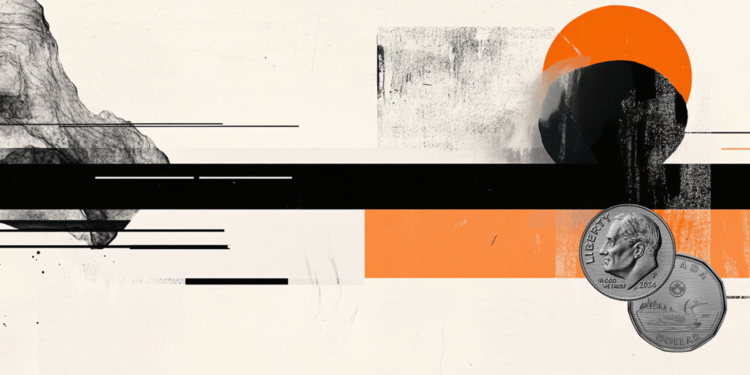- AUD/USD sails through mixed trading as sellers regain momentum.
- The focus now is on Wednesday’s US inflation numbers and the Fed’s dot chart.
- Australia releases mixed figures from NAB business survey.
On Tuesday, the AUD/USD pair saw mixed trading, facing some bearish pressure and hovering around the 0.6605 zone. This change occurred as sellers returned to the market after a small bounce on Monday. The two-day Federal Reserve (Fed) meeting, which will conclude on Wednesday, and the release of US May inflation data will be the main drivers this week.
On the Australian front, a mixed economic outlook with stubbornly high inflation could lead the Reserve Bank of Australia (RBA) to delay cuts, which could limit losses for the Australian dollar.
Daily Market Summary: Australian Dollar Under Pressure as Traders Anticipate CPI, Fed Decision
- On the US side, markets await the May Consumer Price Index (CPI) data to be released on Wednesday.
- The Fed’s two-day meeting, which began on Tuesday and will end on Wednesday, has captured the market’s attention. Any new clues about its interest rate forecast could trigger volatility in the markets.
- Guidance from an updated dot chart is also anticipated.
- NAB’s May business survey shows mixed results for Australia’s outlook, as business confidence fell to a six-month low of -3 from 1 in April.
- Business conditions decreased slightly to 6, just below the long-term average, while the Employment subcomponent showed improvement.
- These indicators suggest that the RBA should be cautious about premature easing.
Technical analysis: AUD/USD maintains support despite pullback
Following the recent declines, the RSI remains below 50, supporting the bearish sentiment, while the MACD indicator creates red bars, reflecting increasing selling pressure.
However, the positive outlook remains the same as the pair remains above the 100-day and 200-day SMA at around 0.6550, suggesting an overall positive trend.
The Australian dollar
One of the most important factors for the Australian Dollar (AUD) is the level of interest rates set by the Reserve Bank of Australia (RBA). As Australia is a resource-rich country, another key factor is the price of its largest export, iron ore. The health of the Chinese economy, its largest trading partner, is a factor, as is inflation in Australia, its growth rate and the Balance of Trade. Market sentiment, that is, whether investors bet on riskier assets (risk-on) or seek safe havens (risk-off), is also a factor, with the risk-on being positive for the AUD.
The Reserve Bank of Australia (RBA) influences the Australian Dollar (AUD) by setting the level of interest rates that Australian banks can lend to each other. This influences the level of interest rates in the economy as a whole. The RBA’s main objective is to maintain a stable inflation rate of 2%-3% by adjusting interest rates up or down. Relatively high interest rates compared to other major central banks support the AUD, and the opposite for relatively low ones. The RBA can also use quantitative easing and tightening to influence credit conditions, with the former being negative for the AUD and the latter being positive for the AUD.
China is Australia’s largest trading partner, so the health of the Chinese economy greatly influences the value of the Australian Dollar (AUD). When the Chinese economy is doing well, it buys more raw materials, goods and services from Australia, which increases demand for the AUD and drives up its value. The opposite occurs when the Chinese economy does not grow as fast as expected. Therefore, positive or negative surprises in Chinese growth data usually have a direct impact on the Australian Dollar.
Iron ore is Australia’s largest export, with $118 billion a year according to 2021 data, with China being its main destination. The iron ore price, therefore, may be a driver of the Australian dollar. Typically, if the price of iron ore rises, the AUD also rises as aggregate demand for the currency increases. The opposite occurs when the price of iron ore falls. Higher iron ore prices also tend to result in a higher likelihood of a positive trade balance for Australia, which is also positive for the AUD.
The trade balance, which is the difference between what a country earns from its exports and what it pays for its imports, is another factor that can influence the value of the Australian dollar. If Australia produces highly sought-after exports, its currency will gain value solely from the excess demand created by foreign buyers wanting to purchase its exports versus what it spends on purchasing imports. Therefore, a positive net trade balance strengthens the AUD, with the opposite effect if the trade balance is negative.
Source: Fx Street
I am Joshua Winder, a senior-level journalist and editor at World Stock Market. I specialize in covering news related to the stock market and economic trends. With more than 8 years of experience in this field, I have become an expert in financial reporting.







